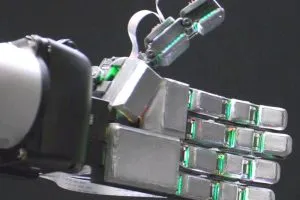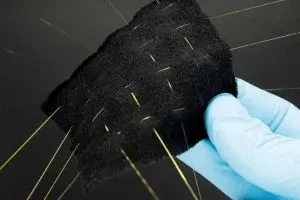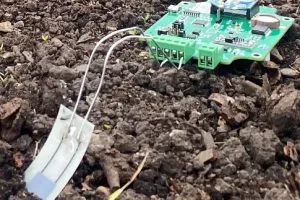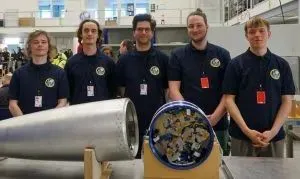
The second Weightless Observation of Behavior with Berlin Liquid Guidance Experiment, it is due to leave the surface of Earth for a short while on a sounding rocket.
Its purpose is an attempt to improve fuel delivery from tanks in weightless conditions by making a better PMD – propellant management device – six of which fly in together in separate water tanks inside the space craft (just visible with triangular lids in photo right).
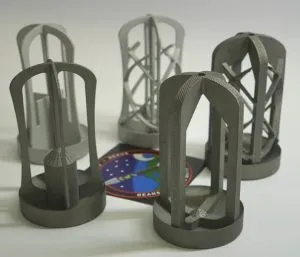
“Using metal 3D printing, the team is developing new PMD designs [left] that optimally utilize the capabilities of this modern technology,” according to Sensiron, which is supplying its SLF3S-4000B flow sensors.
Wobble2 comes from Berlin Experimental Astronautics Research Student, a team from the Technical University of Berlin that qualified for the 15th cycle of the Rexus/Bexus rocket programme, which comes out of an agreement between German Aerospace Center DLR and SNSA, the Swedish National Space Agency.
Each 48 x 15.5 x 8.6mm sensor can measure water at up to 600ml/min with 5% accuracy and 0.5% repeatability. Consumption is 6mA from 3.2 – 3.8V and data is avaiolable over I2C or RS485.
Founded in 1998, Sensirion now employs 1,200 people at its headquarters in Stäfa. Switzerland.
 Electronics Weekly
Electronics Weekly

